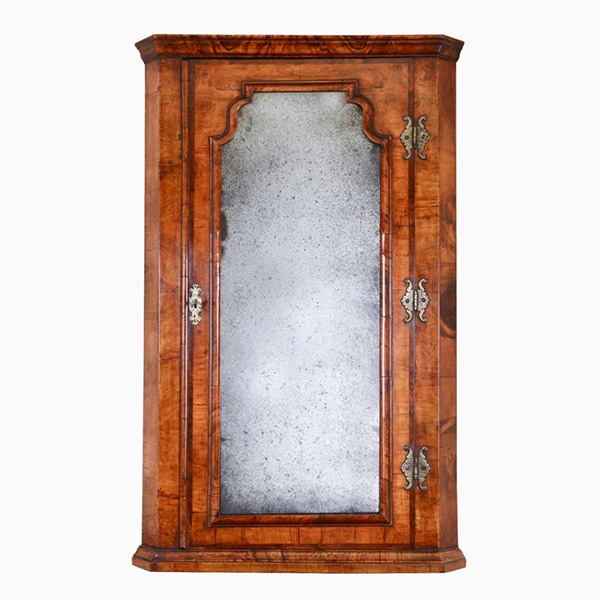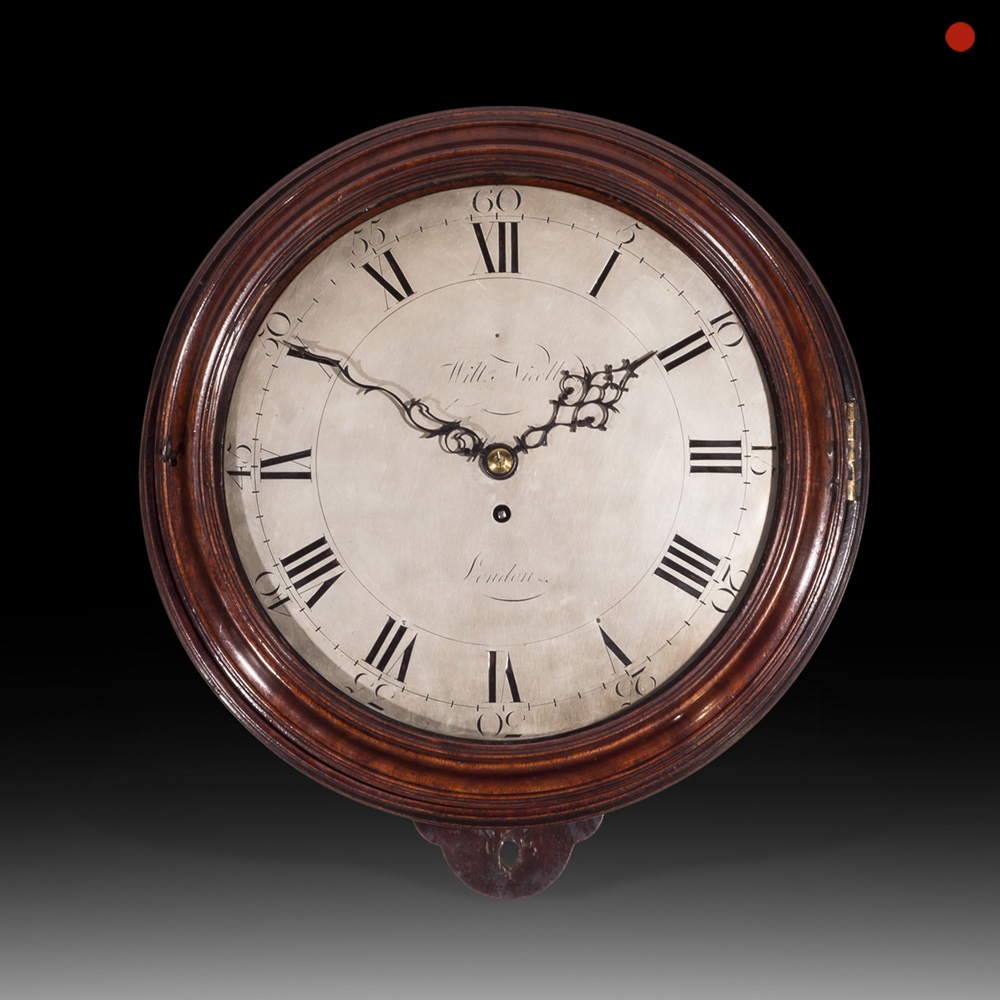Large Mahogany 18th-Century Dial Clock, William Nicoll, London
1780 England
Sold
Request Information
Follow Us
Large Mahogany 18th-Century Dial Clock, William Nicoll, London
The solid mahogany case has a moulded mahogany glazed door, which can be locked on the
The silvered brass dial is attached to the case by two spigots, which pass through holes in the outer rim of the case, which are secured at the back by steady pins. It is signed by the maker in the following manner:
Willm Nicoll London.
The time is indicated by a fine pair of period pierced blued-steel hands on a black Roman chapter ring with Arabic five minute and minute divisions.
The spring-driven, eight-day movement has a going train with fusee, verge escapement and short pendulum.
Features
• Moulded mahogany glazed door
• Viewing doors to the side and bottom
• Large silvered dial
• Signed to the dial Willm Nicoll London
Signed/Inscribed
Willm Nicoll London
Condition
Provenance
Private collection Thame Oxfordshire
Literature
There are several makers of this name recorded, but it is most likely that this is William Nicoll(s) who was established in Great Portland Street around 1795 and also made barometers.
Brian Loomes, ‘Watchmakers and Clockmakers of the World, London’, 2006, p. 572
Dimensions
PREVIOUSLY SOLD
No Results Found
The page you requested could not be found. Try refining your search, or use the navigation above to locate the post.
No Results Found
The page you requested could not be found. Try refining your search, or use the navigation above to locate the post.
YOU MAY ALSO LIKE

Queen Anne Walnut Corner Cupboard with Bevelled Mirror Plate
A truly remarkable find in original condition. To the door a shaped soft bevelled mirror plate is framed by a cross-grain molding of typical queen Anne design which is further cross-banded, feather-banded and edged to the opening with a single de-molding.

Queen Anne Walnut Corner Cupboard with Bevelled Mirror Plate
A truly remarkable find in original condition. To the door a shaped soft bevelled mirror plate is framed by a cross-grain molding of typical queen Anne design which is further cross-banded, feather-banded and edged to the opening with a single de-molding.



